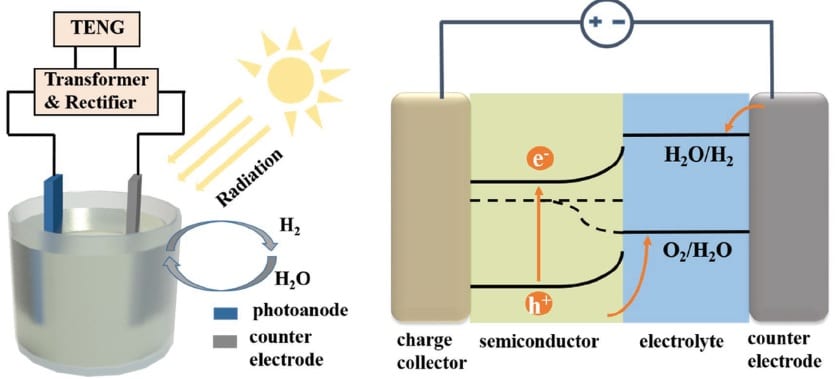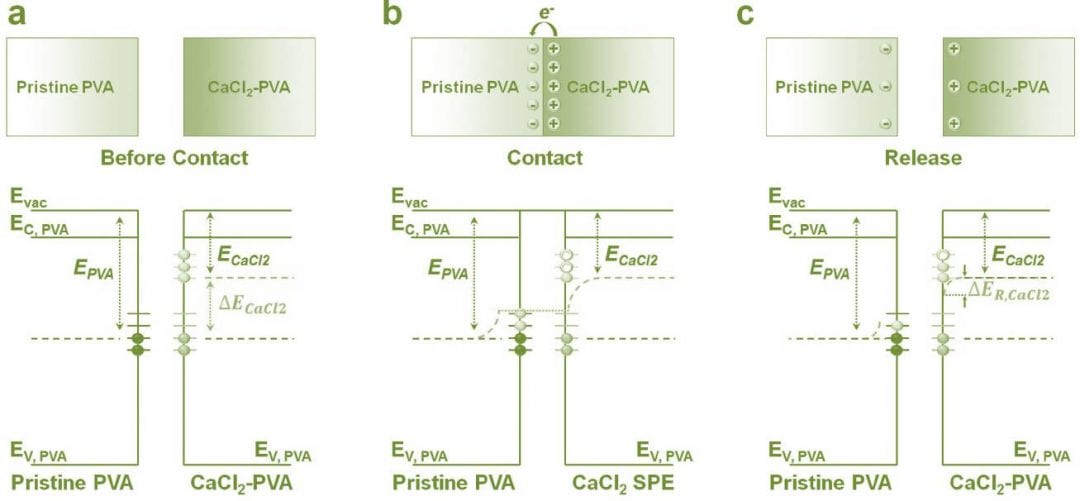Harvesting energy in creative ways is at the forefront of energy research and could be the key to the next commercial breakthroughs, particularly for small-scale energy generation, conversion and storage.
The triboelectric nanogenerator (TENG) is certainly one exciting frontier, converting the low-frequency mechanical energy from repetitive actions such as footsteps or wave motion into an alternating electric current. This is achieved via an induction process, based on the generation of static charges during contact–separation cycles of materials with differing triboelectric properties, leading to a potential difference.
Many different device configurations are possible, leading to a great versatility of application for this technology. It can also be coupled to other kinds of devices, providing sufficient energy to boost reactions such as those involved in photoelectrochemical (PEC) water splitting.
In one such example, a flexible TENG device was connected to a PEC water splitting system via a lithium-ion battery (LIB), ensuring a regularity of output from the boosting system to the PEC cell. The researchers who presented this hybrid system, collaborating between Beijing in China and Georgia Tech in the USA, were able to measurably improve charge separation and diffusion, which are key problems when trying to increase the solar-to-hydrogen conversion, enhancing the overall efficiency of a water splitting system.

The photoanodes were composed of TiO2 nanoarrays decorated with gold nanoparticles, which exploit the surface plasmon resonance effect to extend the working range of the system into the visible region, additionally enhancing the generated photocurrent. The application of the TENG/LIB booster system provides a synergistic effect, allowing electrolysis to occur simultaneously with PEC water splitting when the system is irradiated.
The TENG itself was based on fluoroplastic polytetrafluroethylene (PTFE) and an indium-tin-oxide film. But is this the best material choice for a TENG device?
A different research group from SKKU in Korea has looked into strategies to enhance the triboelectric properties of solid polymer electrolytes (SPEs), exploiting asymmetric ion pairing within the electrolyte layer to increase the positive or negative character of the material.
Shunning the typical choice of a polymer–metal pairing, they dope polyvinyl alcohol (PVA) with either phosphoric acid (H3PO4), an electrolyte with more cations than anions, or calcium chloride (CaCl2), an electrolyte with more anions than cations. The mismatch in the number of positive and negative ions present in the electrolyte species enhances the positive or negative character of the PVA friction layer, providing a dramatic boost to the output current and voltage as compared to aluminium or nylon contact layers when coupled with PTFE.
These researchers thereby avoid additional surface functionalisation or modification steps and were able to demonstrate the stable operation of their SPE TENG over thirty thousand cycles. A new triboelectric series showing their doped solid polymer electrolytes, as well as further details of the TENG/LIB/PEC system setup, can be found in Advanced Energy Materials.

















